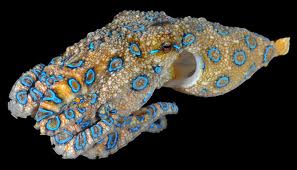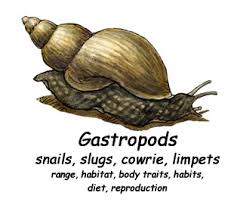
- Most with bilateral symmetry
- Most with external shell
- Some internal and reduced (vestigial)
- Some lost all together
- Feeding device like a toothed, rasping tongue (radula)

- Muscular “foot”



- Complete digestive tract with 2 ends
- Class Bivalve: Clams and their relatives
- Filter feeders
- 2 shells, strong muscles hold shells shut
- Class Gastropoda: snails and slugs
- One shell (or reduced and internal)
- Herbivores, carnivores and decomposers


- Class Cephalopoda: squid, octopus, and nautilus
- Distinct head, large eyes
- Carnivorous
- Crawl or use a jet stream of water to move




Gastropods eating other mollusks…
These round holes are a result of snails using their radula (rough, scraping tongue like structures) to scrape through the shells of other snails and bivalves.





